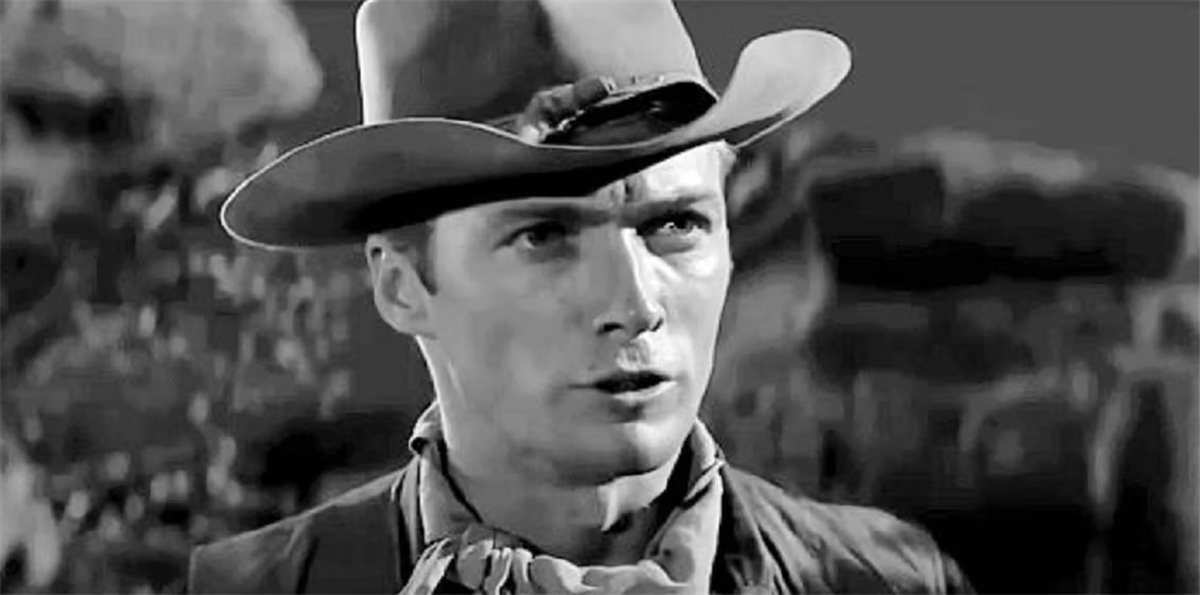Is it really the worst movie, or even Eastwood’s worst? Let’s see.
- Clint Eastwood’s first credited role in a Western, Ambush at Cimarron Pass, is not his worst film but is far from his best due to cringeworthy elements and a painfully dull plot.
- The depiction of Indigenous people in the film, like many Westerns, is problematic and outdated, highlighting the need for better representation.
- While Ambush at Cimarron Pass may not be memorable and lacks the refined acting Eastwood later became known for, it did not hinder his career and paved the way for future successes.
Clint E astwood
The Pedestrian Western That Is ‘Ambush at Cimarron Pass’

Ambush at Cimarron Pass, Eastwood’s first credited role in a Western, takes place shortly after the American Civil War. As the film begins, Sgt. Matthew Blake (Scott Brady) of the Seventh Cavalry and his men are seen going through Apache territory. Along the way, they encounter a group of former Confederate soldiers, led by Capt. Sam Prescott (Frank Gerstle), who are wary of the group after Apaches in Union uniforms attacked them and made off with their herd. Blake explains that his group also encountered Apaches, who killed all but four men and their scout. They are now escorting a man named Corbin (Baynes Barron), under arrest for selling guns to the Apaches, to Fort Waverly, along with the confiscated 36 repeating rifles he was planning on selling next. The two groups decide to join forces, a move which doesn’t sit well with Keith Williams (Clint Eastwood), whose mother and sister were killed by the Yankees in the war. That night, Apaches drop off Teresa (Margia Dean), a Mexican American woman, near the men’s encampment. As they move to help her, the Apaches take advantage of the distraction to steal their horses and kidnap the soldier who was guarding them. Teresa tells them about how the Apaches burned down her rancho, killed her brother, father, and sister, and is only alive so that she can give them a message: they can have their horses back in exchange for the rifles.
After a heated argument on what to do, the group opt to keep the rifles, which leads to the death of the soldier the Apaches had kidnapped. Blake suggests they walk the rest of the way, confident that so long as they have the guns, the Apaches won’t attack. Oh yah… that’ll do the trick. As they reach Cimarron Pass, a small party of Apaches attack — shocking, right? — but Blake instructs the group not to fire back, rightly assessing it as a ploy to get them to waste ammunition. The cowardly Judge Stanfield (Irving Bacon), who earlier had tried to instigate a mutiny, frees Corbin during the kerfuffle, and Corbin thanks him by killing him and rounding up some of the rifles to bring to the Apaches. Only he too ends up dead, thanks to a spear. Blake and Prescott kill two Apaches that try to retrieve the rifles, and are able to retrieve the rifles after the attacking Apache ride off. Weakened, the surviving members of the group are far too weary to make their way to the fort while carrying the rifles, so Burke orders them destroyed. Watching the rifles burn, Keith, who has come to respect Blake, posits that “sometimes one has to lose before finally winning.” The film ends with the crew successfully reaching Fort Waverly.
‘Ambush at Cimarron Pass’ Is Bad, But Hardly the Worst

When assessing an old Western like Ambush at Cimarron Pass, there are always going to be some elements that do not age well, primarily the film’s antagonists, the Apaches. The depiction of Indigenous people in western media as a whole, not just in the Western, has long been troublesome, with 2022 the first real watershed moment for Indigenous representation in terms of numbers and positivity. So if we push those elements to the side for the time being, we can assess the film on its other merits. News flash: it still isn’t pretty. Teresa is used primarily as eye candy, wearing low-cut tops throughout the film. The Southerners lack any type of Southern accent to speak of (no pun intended). The script has the characters making completely asinine decisions, and the actors themselves — including Eastwood — are stiff. Its biggest sin, which most reviews of the film note, is just how painfully dull Ambush at Cimarron Pass is. However, given that the film was made over eight days, as Eastwood states in his interview with The Hollywood Reporter, it was never going to be an Oscar contender of any sort.
But the question isn’t if Ambush at Cimarron Pass is the worst film, or even the worst Western (and it isn’t — maybe a look at Jesse James Meets Frankenstein’s Daughter will put things into perspective). The question is if the film is Eastwood’s worst. He certainly hasn’t honed his craft at this point, with the film being one of his first, and comes before his time on TV’s Rawhide, where playing Rowdy Yates gave him a vehicle in which to grow as an actor. It isn’t a memorable film, often not even mentioned at all when looking at Eastwood’s filmography. But no, it is not his worst. That title has a few contenders: 1989’s Pink Cadillac, 1984’s City Heat with Burt Reynolds, or 1980’s Any Which Way You Can, in which he shares the screen with a pet orangutan. For the second time, no less (it’s a sequel to Every Which Way But Loose, which introduced Philo Beddoe and Clyde). It may be considered Eastwood’s worst Western, but even there it is up against the painful Western musical Paint Your Wagon (Eastwood did dodge Charro!, though, so that has to be a win). Thankfully, the one thing that Ambush at Cimarron Pass didn’t do is end Eastwood’s acting career before it truly began, meaning its biggest failure ended up being its biggest success.
